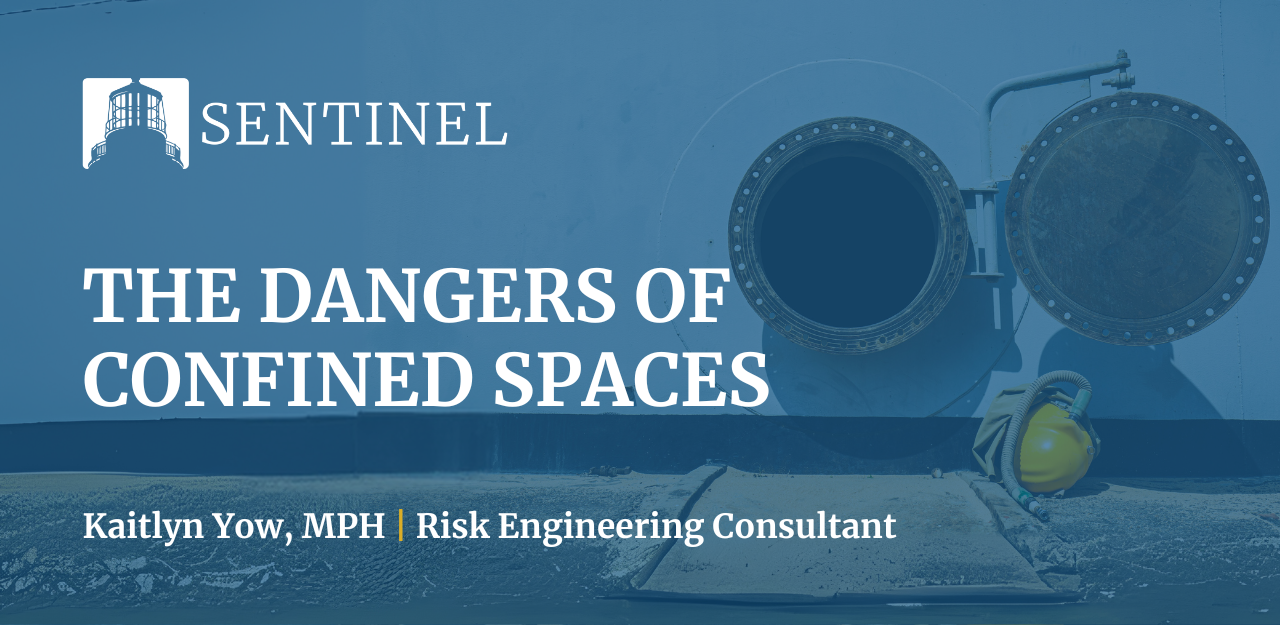When people hear the term “confined space”, what usually comes to mind is a small or restricted area. The Occupational Health and Safety Administration (OSHA) provides a precise definition of confined spaces along with regulations for those that enter them.
OSHA defines a confined space as a space that meets all three of the following criteria:
- The space must be “large enough and so configured that an employee can bodily enter and performed assigned work.”
- The space must “have limited or restricted means for entry or exit.”
- The space must not be “designed for continuous employee occupancy.”
Examples of confined spaces are silos, vats, tanks, compactors, crawl spaces, tunnels, boilers, wells, hoppers, sewers, and septic tanks, just to name a few.
The Risks of Confined Spaces
Confined spaces are common across various industries, and employers may unknowingly have their employees regularly entering and working inside confined spaces. Performing tasks as simple as changing a filter or conducting repairs in a confined space without adequate controls and training can lead to severe injury or fatality. These spaces may pose imminent danger especially considering they are not designed for humans to occupy them.
Confined spaces present risks such as:
- Oxygen deficiency
- Oxygen enrichment
- Explosive atmospheres
- Excessive heat
- Toxic gases/fumes
- Moving parts
- Crush hazards
- Electrocution
- Engulfment
- Excessive water
According to the United States Bureau of Labor Statistics, trench collapses resulted in the deaths of 168 workers between 2011 to 2018, with 135 of these fatalities occurring in the private construction industry. Over the 8-year period, there were 126 cases of inhalation of a harmful substance in a confined space during a single incident. The most common types of inhaled gases were hydrogen sulfide, carbon monoxide, and methane. Engulfment in collapsing material from tanks, bins, and vats caused 205 fatalities from 2011 to 2018.
What Can You Do?
Performing a hazard assessment of your facility or property to identify what confined spaces are present is a crucial first step for employers and can potentially save lives. Employees who enter confined spaces should receive thorough training to recognize and address the risks before entry. Establishing a robust confined space program is vital in preventing losses associated with entry. Taking the time to understand and mitigate the risks of confined spaces is an investment in the safety and well-being of employees.
How Can Sentinel Help?
Need help identifying confined spaces or developing a program in your environment? Allow our Sentinel Risk Performance Group to offer advice and provide guidance so that you and your operation can effectively prevent potential losses and gain OSHA Compliance.
We specialize in safety consulting, resulting in managing risks and exposures while also preparing for future threats. Partnering with organizations of all sizes, we assess your unique exposures, mitigate risks, and provide tailored solutions for your specific requirements. This enables you to focus on continued growth and success. Contact us today to learn how we are dedicated to Safeguarding Your Success.



